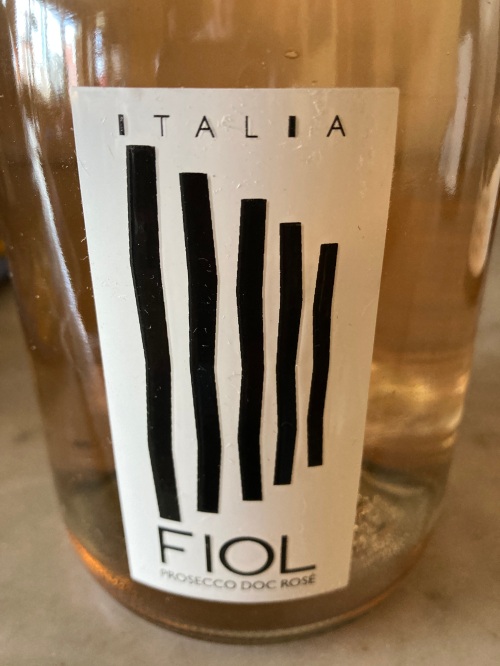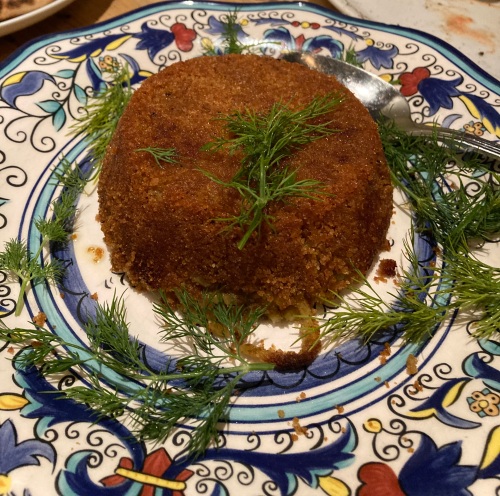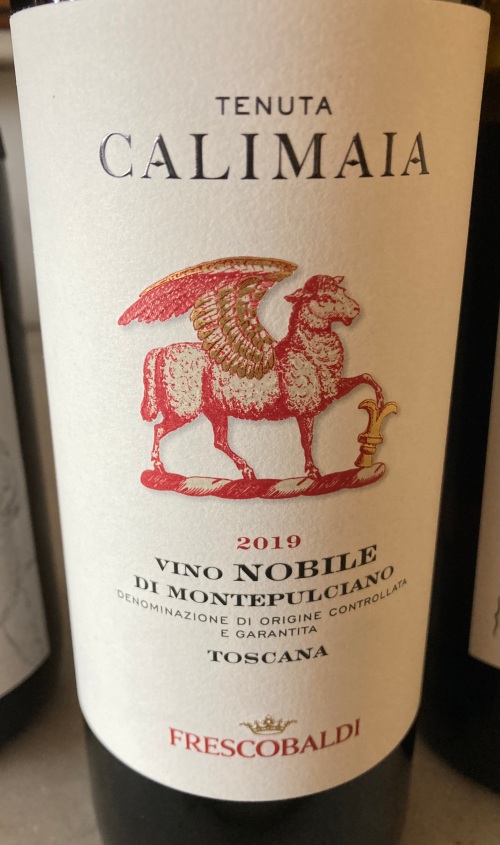This year the Consorzio Vino Chianti Classico is celebrating its 100th Anniversary. I attended the Chianti Classico 100th Anniversary Grand Tasting which was held on April 29th in NYC. It was a tasting not only of the current vintages of Chianti Classico but also of older vintages.
Here is the official announcement from the Consorzio:
The royal decree of 7th March 1924 made possible the establishment of the Consorzi di Tutela, with the 33 founding fathers the first to seize the opportunity to protect and preserve Chianti Classico wine, its territory, landscape, and economy. On March 14 1924 it was signed by the founding fathers.
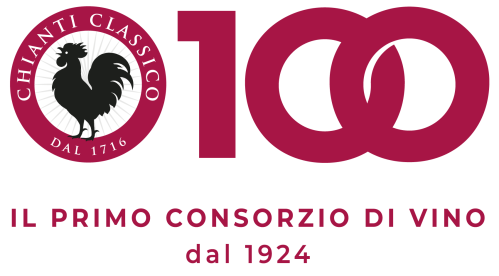 It is the first wine Consortium founded in Europe and one whose purpose has always been to protect and promote one of the best-known Made in Italy wine products.
It is the first wine Consortium founded in Europe and one whose purpose has always been to protect and promote one of the best-known Made in Italy wine products.
The Chianti Classico Wine Consorzio celebrated together with the city of Florence its first 100 years! A hundred years ago after its establishment in Radda in Chianti, the Chianti Classico Consorzio established its offices in the historic palazzo Uguccioni in Piazza della Signoria, in Florence. Today, in an exceptional occasion, the historic headquarters of the Consortium returns to its old clothes, to share with all the citizens what the Chianti Classic wine is today. Among stellar chefs, tasting… rock, theater, music, young producers.
The following are a just a few of the wines I tasted in NYC
 Monsanto Chianti Classico “IL Poggio” made from 95% Sangiovese and 5% Colorino and Canaiolo. The training system is guyot and spurred cordon. The wine is vinified in temperature controlled conical steel vats. Delestage and pumping over for about 20 to 22 days. The wine is aged in 500 liter oak barrels, partly new and partly secondhand for 18 to 20 months. The wine remains in the bottle for 2 years before release. The wine has hints of blackberries and blueberries with a hint of violets. Monsanto is located in the western-central area of the Chianti Classico region in the municipality of Barberino Tavarnelle.
Monsanto Chianti Classico “IL Poggio” made from 95% Sangiovese and 5% Colorino and Canaiolo. The training system is guyot and spurred cordon. The wine is vinified in temperature controlled conical steel vats. Delestage and pumping over for about 20 to 22 days. The wine is aged in 500 liter oak barrels, partly new and partly secondhand for 18 to 20 months. The wine remains in the bottle for 2 years before release. The wine has hints of blackberries and blueberries with a hint of violets. Monsanto is located in the western-central area of the Chianti Classico region in the municipality of Barberino Tavarnelle.
I have a long history with Monsanto going back almost 40 years and the wonderful 1977 vintage. I visited the winery and met the owner, the legendary Fabrizio Bianchi, in 1983. Today the winery is in the hands of his daughter Laura Bianchi.
 They were also showing a 1969 Monsanto Chianti Classico “IL Poggio”
They were also showing a 1969 Monsanto Chianti Classico “IL Poggio”
 Cecchi Chianti Classico “Storia La Famiglia” 1981 Made from 90% Sangiovese, 5% Colorino and 5% Canaiolo. The vineyards are at 259 meters and the soil is middle dough, alkaline and stones. There are 5,000 plants per hectare and the training system is spurred cordon. There is traditional red wine fermentation at a controlled temperature. Fermentation and maceration for 18 days. The wine is aged in bottle for a minimum of 2 months. This is a wine with hints of raspberries, strawberries, blueberries a touch of spice and a hint of pine. Always one of my favorites.
Cecchi Chianti Classico “Storia La Famiglia” 1981 Made from 90% Sangiovese, 5% Colorino and 5% Canaiolo. The vineyards are at 259 meters and the soil is middle dough, alkaline and stones. There are 5,000 plants per hectare and the training system is spurred cordon. There is traditional red wine fermentation at a controlled temperature. Fermentation and maceration for 18 days. The wine is aged in bottle for a minimum of 2 months. This is a wine with hints of raspberries, strawberries, blueberries a touch of spice and a hint of pine. Always one of my favorites.
 Pouring the wine for both Monsanto and Cecchi was Giulia Cecchi, daughter of Andrea Cecchi CEO of Cecchi. She was also pouring wine for her mother, Laura Bianchi of Monsanto.
Pouring the wine for both Monsanto and Cecchi was Giulia Cecchi, daughter of Andrea Cecchi CEO of Cecchi. She was also pouring wine for her mother, Laura Bianchi of Monsanto.
 Ricasoli Chianti Classico Castello di Brolio Grand Selezione 2021 made from 100% Sangiovese. Castello di Brolio is their flagship wine created from a meticulous selection of estate-grown grapes from the three most representative soils in Brolio: Macigno del Chianti (sandstone), Scaglia Toscana (Galestro), Monte Morello (Alberese). There are 6,600 vines per hectare and the training system is spurred cordon vines were planted 1994-2005. Harvest from September 21 to 28. Fermentation and maceration in stainless steel tanks at a controlled temperature of 24°C-27°C (75.2°-80.6°F) with 14-16 days of skin contact. The wine ages for 22 months in tonneaux of 500hl of which 30% are new oak and 70% of second passage. They were also pouring wines from older vintages
Ricasoli Chianti Classico Castello di Brolio Grand Selezione 2021 made from 100% Sangiovese. Castello di Brolio is their flagship wine created from a meticulous selection of estate-grown grapes from the three most representative soils in Brolio: Macigno del Chianti (sandstone), Scaglia Toscana (Galestro), Monte Morello (Alberese). There are 6,600 vines per hectare and the training system is spurred cordon vines were planted 1994-2005. Harvest from September 21 to 28. Fermentation and maceration in stainless steel tanks at a controlled temperature of 24°C-27°C (75.2°-80.6°F) with 14-16 days of skin contact. The wine ages for 22 months in tonneaux of 500hl of which 30% are new oak and 70% of second passage. They were also pouring wines from older vintages
 Vecchie Terre Di Montefili Gran Selezione made from 100% Sangiovese from hillside vineyards at 500 meters. The soil is Alberese and the training system is cordon and guyot. The 3 hectare vineyard was planted in the 1980’s. Hand harvested with selection in the vineyard. Spontaneous fermentation takes place in stainless steel tanks. No added yeasts. The wine ages for 22 months in 20 HL casks (botti). This is a structured and balanced fruity wine with hints of red cherry, blackcurrants, ripe plum with a note of cinnamon and a touch of cloves. I visited the winery a few years ago and have spoken to one of the owners, Nicola Marzavilla about the wine and the winery.
Vecchie Terre Di Montefili Gran Selezione made from 100% Sangiovese from hillside vineyards at 500 meters. The soil is Alberese and the training system is cordon and guyot. The 3 hectare vineyard was planted in the 1980’s. Hand harvested with selection in the vineyard. Spontaneous fermentation takes place in stainless steel tanks. No added yeasts. The wine ages for 22 months in 20 HL casks (botti). This is a structured and balanced fruity wine with hints of red cherry, blackcurrants, ripe plum with a note of cinnamon and a touch of cloves. I visited the winery a few years ago and have spoken to one of the owners, Nicola Marzavilla about the wine and the winery.
 Tenuta Perano (Frescobaldi) Chianti Classico 2021 made from Sangiovese and complementary varieties. Grapes are harvested by hand. Vinification is in stainless steel tanks at a controlled temperature. Then maceration on the skins with a controlled and careful pumping over. The different grapes were aged separately in wood, then further aging in bottle until the wine is ready for release. The wine has hints of red berries, cherries, plums, violets, floral notes and a touch of spice. $27
Tenuta Perano (Frescobaldi) Chianti Classico 2021 made from Sangiovese and complementary varieties. Grapes are harvested by hand. Vinification is in stainless steel tanks at a controlled temperature. Then maceration on the skins with a controlled and careful pumping over. The different grapes were aged separately in wood, then further aging in bottle until the wine is ready for release. The wine has hints of red berries, cherries, plums, violets, floral notes and a touch of spice. $27
 Chianti Classico Badia a Coltibuono 2021 made from 90% Sangiovese 5% Colorino and 5% Ciliegiolo. The vineyards are at 250/330 meters and the soil in clay loam and limestone rock. The training system is guyot and the wines are 6 to 30 years old. There are 5,000 to 7,300 vines per hectare. Indigenous yeast from grapes with a starter. Spontaneous malolactic fermentation takes place in stainless steel tanks. There is a light gelatin fining and a membrane filtration. The wine is aged in 2,000 to 2,500 liter French and Austrian oak casks for about 12 months. Then aged in bottle for about 3 months before release. The winery has been organic since 1995. The wine has hints strawberry and raspberry with good acidity, a note of violet and a touch of sunshine on the Tuscan pines. I have been drinking this Chianti Classico since I had lunch at the winery in 1983 and had the 1978 vintage.
Chianti Classico Badia a Coltibuono 2021 made from 90% Sangiovese 5% Colorino and 5% Ciliegiolo. The vineyards are at 250/330 meters and the soil in clay loam and limestone rock. The training system is guyot and the wines are 6 to 30 years old. There are 5,000 to 7,300 vines per hectare. Indigenous yeast from grapes with a starter. Spontaneous malolactic fermentation takes place in stainless steel tanks. There is a light gelatin fining and a membrane filtration. The wine is aged in 2,000 to 2,500 liter French and Austrian oak casks for about 12 months. Then aged in bottle for about 3 months before release. The winery has been organic since 1995. The wine has hints strawberry and raspberry with good acidity, a note of violet and a touch of sunshine on the Tuscan pines. I have been drinking this Chianti Classico since I had lunch at the winery in 1983 and had the 1978 vintage.
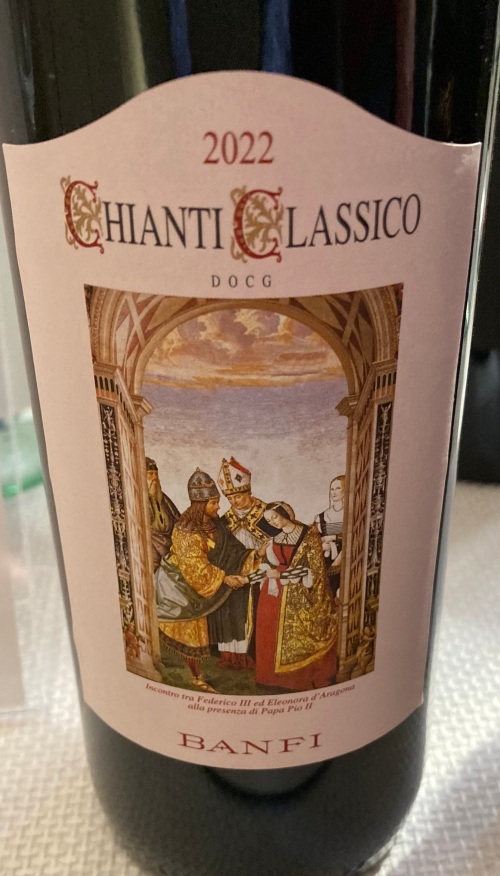 Chianti Classico Banfi 2022 made from mostly Sangiovese and small amounts of Canaiolo Nero and Cabernet Sauvignon. The soil is calcareous and well structured. Fermentation takes place with traditional skin contact of 8 to 10 days. The wine is aged for a short time in large casks of French oak. Bottling takes place the summer after the harvest. The wine has hints of cherries, plums and violets with a note of leather.
Chianti Classico Banfi 2022 made from mostly Sangiovese and small amounts of Canaiolo Nero and Cabernet Sauvignon. The soil is calcareous and well structured. Fermentation takes place with traditional skin contact of 8 to 10 days. The wine is aged for a short time in large casks of French oak. Bottling takes place the summer after the harvest. The wine has hints of cherries, plums and violets with a note of leather.
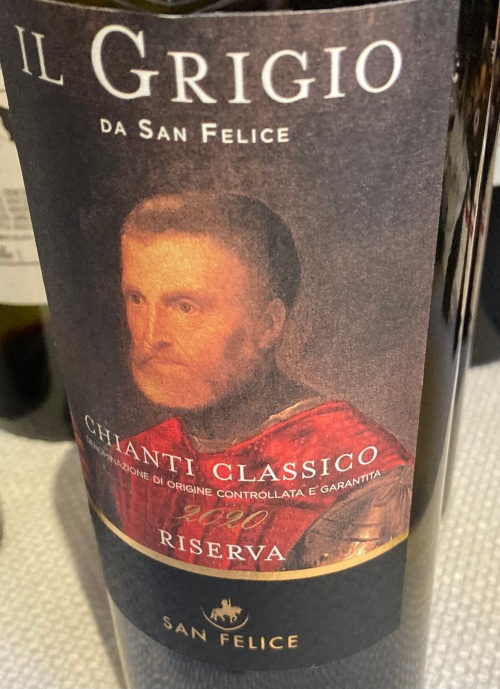 San Felice Chianti Classico Riserva “IL Grigio” made from 100% Sangiovese from the San Felice Estate in Castelnuovo Beradenga (Siena). Soil is medium textured. Predominantly calcareous marl breakdown of Alberese and Galestro limestone, with abundant gravel pebble mixture. Spur pruned cordon training system. Harvest is the second week of September to the first week of October. Vinification & maturation fermentation on the skins at 28–30° C for 18–20 days followed by malolactic fermentation in steel. 80% of the wine then matures for 24 months in 60 or 90 hl in Slavonian oak casks, and 20% in 225-liter French barriques, followed by a further 6 months or so in the bottle before release. The wine has hints of violets, red berry fruit, cherry, strawberry and a hint of plum.
San Felice Chianti Classico Riserva “IL Grigio” made from 100% Sangiovese from the San Felice Estate in Castelnuovo Beradenga (Siena). Soil is medium textured. Predominantly calcareous marl breakdown of Alberese and Galestro limestone, with abundant gravel pebble mixture. Spur pruned cordon training system. Harvest is the second week of September to the first week of October. Vinification & maturation fermentation on the skins at 28–30° C for 18–20 days followed by malolactic fermentation in steel. 80% of the wine then matures for 24 months in 60 or 90 hl in Slavonian oak casks, and 20% in 225-liter French barriques, followed by a further 6 months or so in the bottle before release. The wine has hints of violets, red berry fruit, cherry, strawberry and a hint of plum.
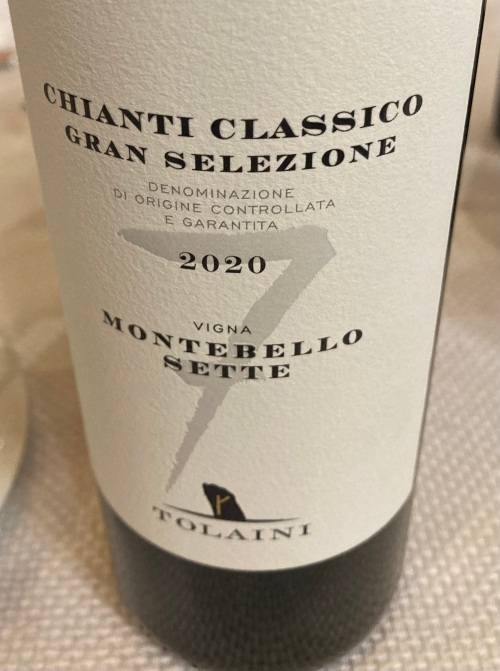 Chianti Classico Tolaini Tolaini Vallenuova 2020 Cantelnuovo Berardenga made from 95% Sanviovese and 5% Canaiolo. The soil is silty clay, rich in limestone with a high percentage of stones. There are 7,350 plants per hectare planted in 2000. Grapes are first selected during harvest in the vineyard and then by an optical sorter when they arrive at the winery; they are destemmed and the whole berries are immediately placed in stainless steel tanks. Fermentation is temperature controlled, and the must is kept in contact with the skins for 20 days. The wine matures for 10 months in a mix of Tuscan, Slavonian, and Austrian oak casks. The wine has hints of black cherry, tobacco, a touch of licorice and a note of spice. This is a winery I discovered a few years ago and really liked their wines.
Chianti Classico Tolaini Tolaini Vallenuova 2020 Cantelnuovo Berardenga made from 95% Sanviovese and 5% Canaiolo. The soil is silty clay, rich in limestone with a high percentage of stones. There are 7,350 plants per hectare planted in 2000. Grapes are first selected during harvest in the vineyard and then by an optical sorter when they arrive at the winery; they are destemmed and the whole berries are immediately placed in stainless steel tanks. Fermentation is temperature controlled, and the must is kept in contact with the skins for 20 days. The wine matures for 10 months in a mix of Tuscan, Slavonian, and Austrian oak casks. The wine has hints of black cherry, tobacco, a touch of licorice and a note of spice. This is a winery I discovered a few years ago and really liked their wines.
 Chianti Classico 2021 Lilliano made from 90% Sangiovese, 5% Merlot and 5% Cabernet Sauvignon. After the quality-selected clusters are destemmed and pressed, the must is fermented and macerated in stainless steel for 18-20 days at a controlled temperature with programmed punch-downs and daily pumpovers. Maceration fermentation takes place in concrete and small stainless steel tanks at a controlled temperature for 18-20 days depending on the vintage. The wine ages for about 12 to 14 months in large casks of French oak and partly in concrete. After maturation, the final blend is assembled, bottled and aged in glass for a minimum of 3 months. This is a wine with hints of red fruit, cherry, violets and a touch of cassis.
Chianti Classico 2021 Lilliano made from 90% Sangiovese, 5% Merlot and 5% Cabernet Sauvignon. After the quality-selected clusters are destemmed and pressed, the must is fermented and macerated in stainless steel for 18-20 days at a controlled temperature with programmed punch-downs and daily pumpovers. Maceration fermentation takes place in concrete and small stainless steel tanks at a controlled temperature for 18-20 days depending on the vintage. The wine ages for about 12 to 14 months in large casks of French oak and partly in concrete. After maturation, the final blend is assembled, bottled and aged in glass for a minimum of 3 months. This is a wine with hints of red fruit, cherry, violets and a touch of cassis.
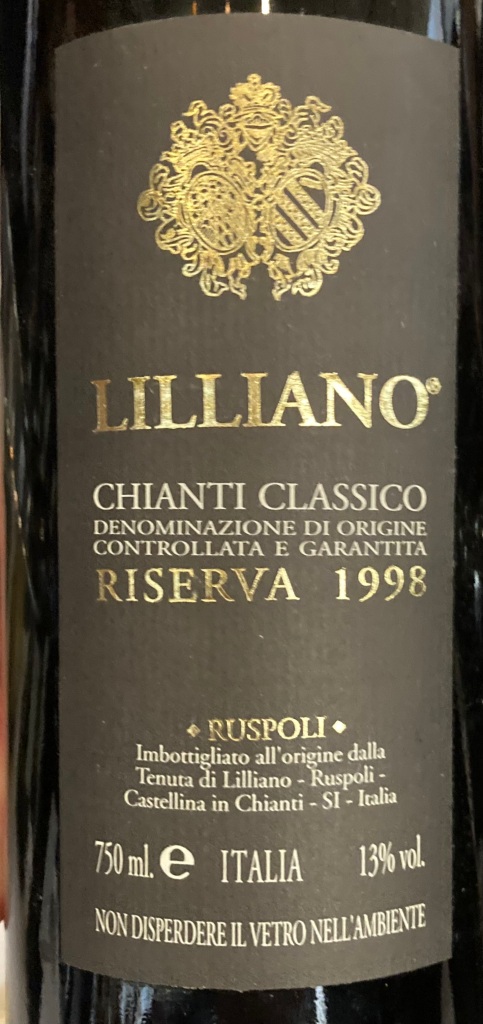 They were also showing Chianti Classico Riserva 1998. I rediscovered this winery a few years ago thanks to a friend and have been a fan ever since.
They were also showing Chianti Classico Riserva 1998. I rediscovered this winery a few years ago thanks to a friend and have been a fan ever since.
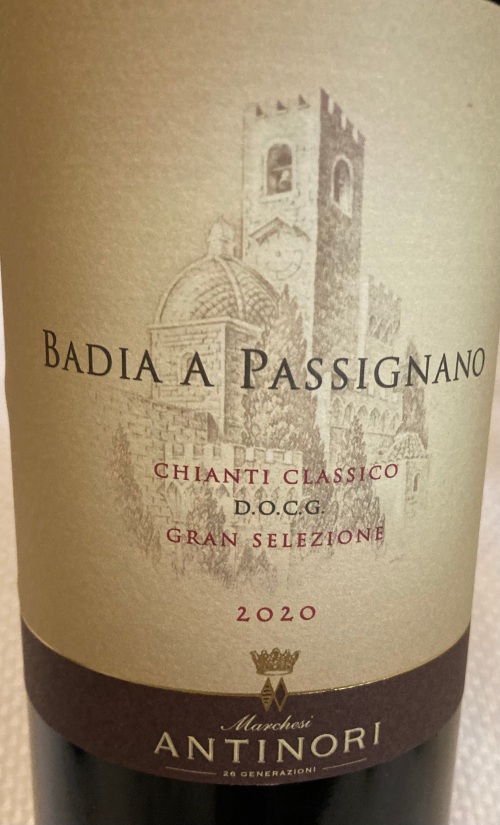 Chianti Classico Antinori “Badia A Passignano” 2020 made from 100% Sangiovese. The production zone is Tavarnella Val di Pesa. The soil is rich in limestone rock with an average amount of clay and the vineyard is at 300 meters. Fermentation lasts for 10 days and the must is in contact with the skins for another 10-12 days. After racking, the various lots were aged for 14 months in Hungarian oak barrels and in French oak barrels. The wine remained in the bottle for another 12 months. The wine has aromas of ripe fruit, with hints of cherries, blood oranges, a note of lavender and a slight touch of vanilla. It has a nice finish and lasting aftertaste.
Chianti Classico Antinori “Badia A Passignano” 2020 made from 100% Sangiovese. The production zone is Tavarnella Val di Pesa. The soil is rich in limestone rock with an average amount of clay and the vineyard is at 300 meters. Fermentation lasts for 10 days and the must is in contact with the skins for another 10-12 days. After racking, the various lots were aged for 14 months in Hungarian oak barrels and in French oak barrels. The wine remained in the bottle for another 12 months. The wine has aromas of ripe fruit, with hints of cherries, blood oranges, a note of lavender and a slight touch of vanilla. It has a nice finish and lasting aftertaste.
I have always been of the opinion that Chianti Classico wines can age. Some of the oldest I tasted have been from Antinori. Thanks to a friend I was able to drink a 1943 Santa Christina which was a Chianti Classico back then. The wine was over 60 years old at the time and it was wonderful.
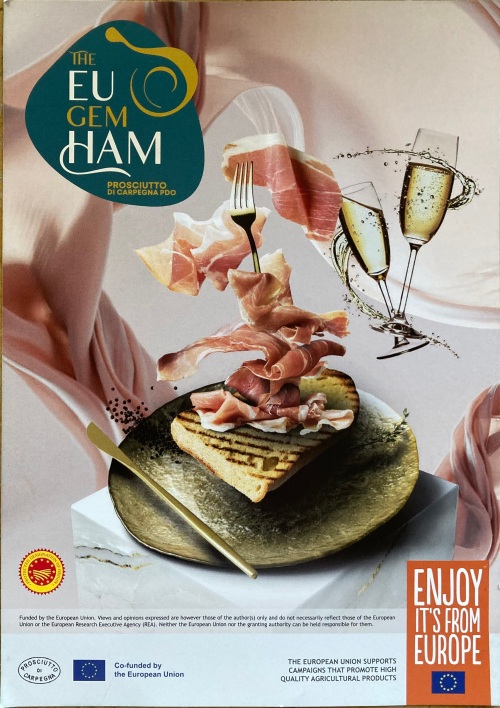 Prosciutto di Carpegna PDO gets its unique flavor and texture from the curing methods used and the climactic conditions in the area where it is produced, a valley where the Adriatic Sea breezes and the mountain air of the Apennines meet. (PDO stands for Protected Designation of Origin, meaning that the ham is produced in a specified location and adheres to established production rules.)
Prosciutto di Carpegna PDO gets its unique flavor and texture from the curing methods used and the climactic conditions in the area where it is produced, a valley where the Adriatic Sea breezes and the mountain air of the Apennines meet. (PDO stands for Protected Designation of Origin, meaning that the ham is produced in a specified location and adheres to established production rules.) The next course was a salad of roasted maitake mushrooms and Prosciutto di Carpegna PDO on Rosette Lettuce with Whipped Ricotta, Crispy Quinoa and Meyer Lemon Vinaigrette.
The next course was a salad of roasted maitake mushrooms and Prosciutto di Carpegna PDO on Rosette Lettuce with Whipped Ricotta, Crispy Quinoa and Meyer Lemon Vinaigrette. Our main course was Halibut wrapped in Prosciutto di Carpegna PDO served with White Turnips, Pimento Oil and Colatura,
Our main course was Halibut wrapped in Prosciutto di Carpegna PDO served with White Turnips, Pimento Oil and Colatura,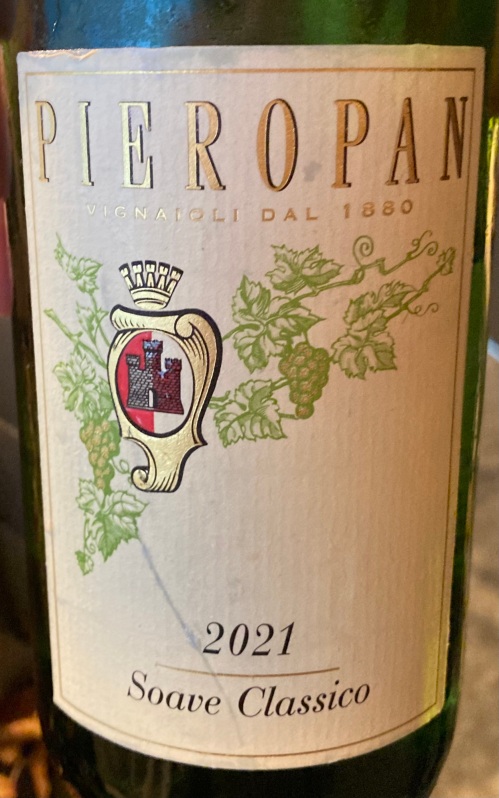 I enjoyed the tasting, but in my opinion the best way to eat Prosciutto di Carpegna PDO and appreciate its unique qualities is with some good bread and a glass or two of chilled spumante or Italian white wine.
I enjoyed the tasting, but in my opinion the best way to eat Prosciutto di Carpegna PDO and appreciate its unique qualities is with some good bread and a glass or two of chilled spumante or Italian white wine.
